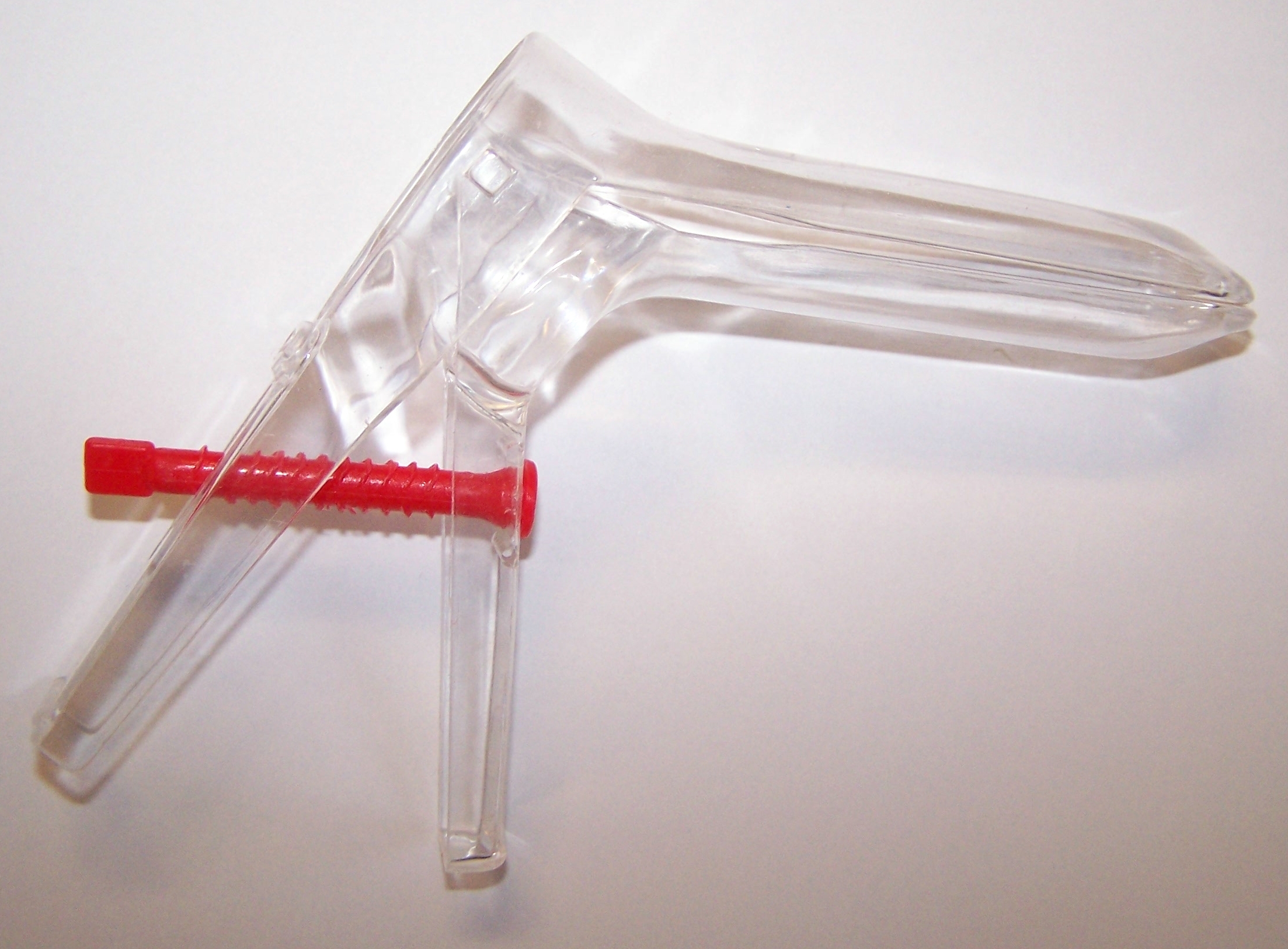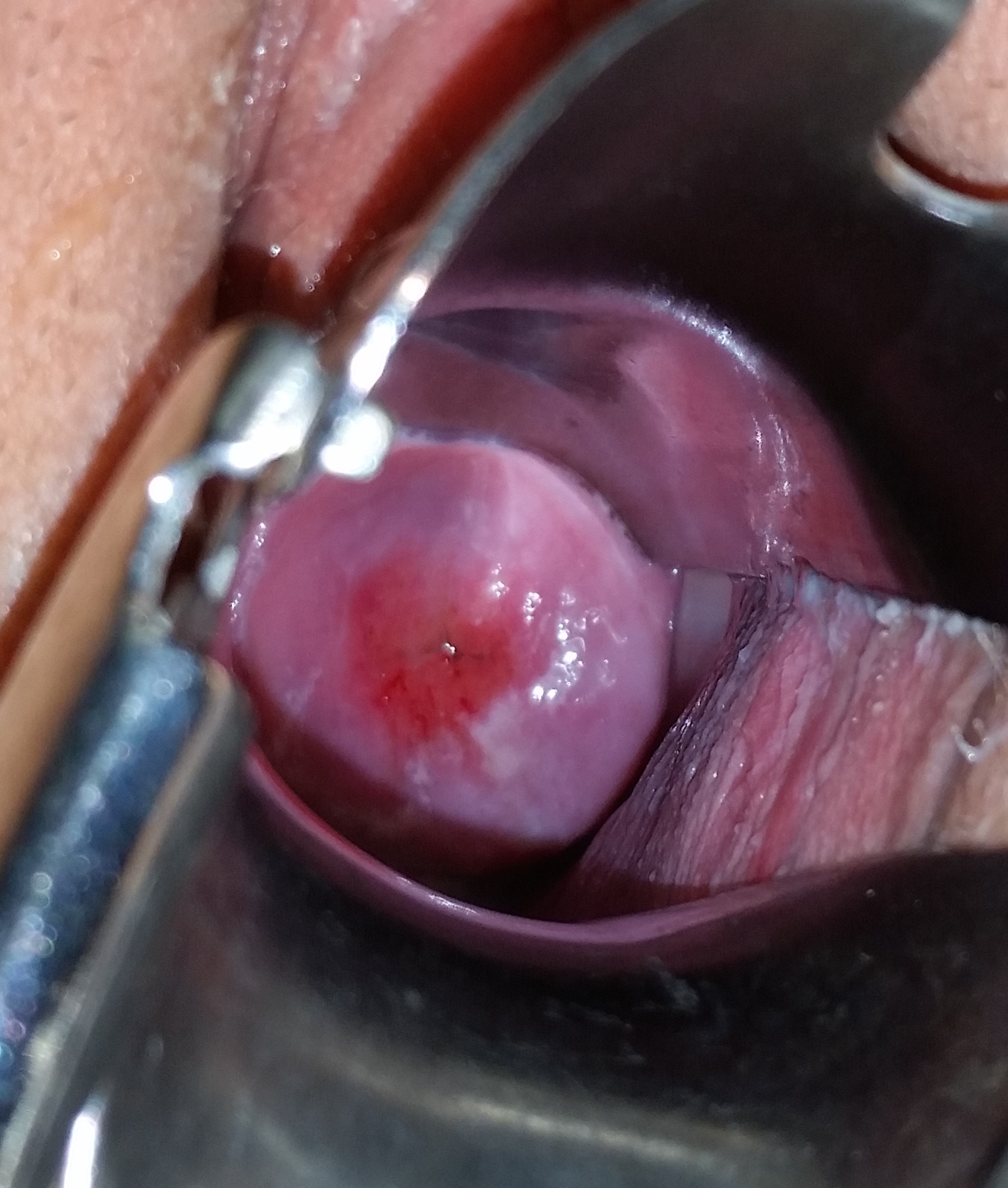|
Endometrial Biopsy
The endometrial biopsy is a medical procedure that involves taking a tissue sample of the lining of the uterus. The tissue subsequently undergoes a histologic evaluation which aids the physician in forming a diagnosis. Medical uses There are a number of indications for obtaining an endometrial biopsy from a non-pregnant woman: * Women with chronic anovulation such as the polycystic ovary syndrome are at increased risk for endometrial problems and an endometrial biopsy may be useful to assess their lining specifically to rule out endometrial hyperplasia or cancer. * In women with abnormal vaginal bleeding the biopsy may indicate the presence of abnormal lining such as endometrial hyperplasia or cancer. * In patients with suspected uterine cancer, the biopsy may discover the presence of cancer cells in the endometrium or cervix. * In female infertility the assessment of the lining can determine, if properly timed, that the patient ovulated, however, the same information can be obt ... [...More Info...] [...Related Items...] OR: [Wikipedia] [Google] [Baidu] |
Micrograph
A micrograph or photomicrograph is a photograph or digital image taken through a microscope or similar device to show a magnified image of an object. This is opposed to a macrograph or photomacrograph, an image which is also taken on a microscope but is only slightly magnified, usually less than 10 times. Micrography is the practice or art of using microscopes to make photographs. A micrograph contains extensive details of microstructure. A wealth of information can be obtained from a simple micrograph like behavior of the material under different conditions, the phases found in the system, failure analysis, grain size estimation, elemental analysis and so on. Micrographs are widely used in all fields of microscopy. Types Photomicrograph A light micrograph or photomicrograph is a micrograph prepared using an optical microscope, a process referred to as ''photomicroscopy''. At a basic level, photomicroscopy may be performed simply by connecting a camera to a microscope, th ... [...More Info...] [...Related Items...] OR: [Wikipedia] [Google] [Baidu] |
Vaginismus
Vaginismus is a condition in which involuntary muscle spasm interferes with vaginal intercourse or other penetration of the vagina. This often results in pain with attempts at sex. Often, it begins when vaginal intercourse is first attempted. The formal diagnostic criteria specifically requires interference during vaginal intercourse and a desire for intercourse. However, the term ''vaginismus'' is sometimes used more broadly to refer to any muscle spasms occurring during the insertion of some or all types of objects into the vagina, sexually motivated or otherwise, including the usage of speculums and tampons. The underlying cause is generally a fear that penetration will hurt. Risk factors include a history of sexual assault, endometriosis, vaginitis, or a prior episiotomy. Diagnosis is based on the symptoms and examination. It requires there to be no anatomical or physical problems and a desire for penetration on the part of the woman. Treatment may include behavior the ... [...More Info...] [...Related Items...] OR: [Wikipedia] [Google] [Baidu] |
Local Anesthesia
Local anesthesia is any technique to induce the absence of sensation in a specific part of the body, generally for the aim of inducing local analgesia, that is, local insensitivity to pain, although other local senses may be affected as well. It allows patients to undergo surgical and dental procedures with reduced pain and distress. In many situations, such as cesarean section, it is safer and therefore superior to general anesthesia. The following terms are often used interchangeably: * ''Local anesthesia'', in a strict sense, is anesthesia of a small part of the body such as a tooth or an area of skin. * ''Regional anesthesia'' is aimed at anesthetizing a larger part of the body such as a leg or arm. * ''Conduction anesthesia'' encompasses a great variety of local and regional anesthetic techniques. Medical A local anesthetic is a drug that causes reversible local anesthesia and a loss of nociception. When it is used on specific nerve pathways (nerve block), effects such as ... [...More Info...] [...Related Items...] OR: [Wikipedia] [Google] [Baidu] |
Ibuprofen
Ibuprofen is a nonsteroidal anti-inflammatory drug (NSAID) that is used for treating pain, fever, and inflammation. This includes painful menstrual periods, migraines, and rheumatoid arthritis. It may also be used to close a patent ductus arteriosus in a premature baby. It can be used by mouth or intravenously. It typically begins working within an hour. Common side effects include heartburn and a rash. Compared to other NSAIDs, it may have other side effects such as gastrointestinal bleeding. It increases the risk of heart failure, kidney failure, and liver failure. At low doses, it does not appear to increase the risk of heart attack; however, at higher doses it may. Ibuprofen can also worsen asthma. While whether it is safe in early pregnancy is unclear, it appears to be harmful in later pregnancy, so is not recommended. Like other NSAIDs, it works by inhibiting the production of prostaglandins by decreasing the activity of the enzyme cyclooxygenase (COX). Ibuprofen is a w ... [...More Info...] [...Related Items...] OR: [Wikipedia] [Google] [Baidu] |
Pathologist
Pathology is the study of the causal, causes and effects of disease or injury. The word ''pathology'' also refers to the study of disease in general, incorporating a wide range of biology research fields and medical practices. However, when used in the context of modern medical treatment, the term is often used in a narrower fashion to refer to processes and tests that fall within the contemporary medical field of "general pathology", an area which includes a number of distinct but inter-related medical specialties that diagnose disease, mostly through analysis of tissue (biology), tissue, human cell, cell, and body fluid samples. Idiomatically, "a pathology" may also refer to the predicted or actual progression of particular diseases (as in the statement "the many different forms of cancer have diverse pathologies", in which case a more proper choice of word would be "Pathophysiology, pathophysiologies"), and the affix ''pathy'' is sometimes used to indicate a state of disease ... [...More Info...] [...Related Items...] OR: [Wikipedia] [Google] [Baidu] |
Formalin
Formaldehyde ( , ) (systematic name methanal) is a naturally occurring organic compound with the formula and structure . The pure compound is a pungent, colourless gas that polymerises spontaneously into paraformaldehyde (refer to section Forms below), hence it is stored as an aqueous solution (formalin), which is also used to store animal specimens. It is the simplest of the aldehydes (). The common name of this substance comes from its similarity and relation to formic acid. Formaldehyde is an important precursor to many other materials and chemical compounds. In 1996, the installed capacity for the production of formaldehyde was estimated at 8.7 million tons per year. It is mainly used in the production of industrial resins, e.g., for particle board and coatings. Forms Formaldehyde is more complicated than many simple carbon compounds in that it adopts several diverse forms. These compounds can often be used interchangeably and can be interconverted. *Molecular formaldeh ... [...More Info...] [...Related Items...] OR: [Wikipedia] [Google] [Baidu] |
Curette
A curette is a surgical instrument designed for scraping or debriding biological tissue or debris in a biopsy, excision, or cleaning procedure. In form, the curette is a small hand tool, often similar in shape to a stylus; at the tip of the curette is a small scoop, hook, or gouge. The verb ''to curette'' means "to scrape with a curette", and curettage ( or ) is treatment that involves such scraping. Uses Some examples of medical use of a curette include: * the removal of impacted ear wax; * dilation and curettage of the uterus, a gynecologic procedure; *excision of many benign tumors and some malignant tumors; * excision of the adenoids (adenoidectomy) by an otolaryngologist; * to scrape tartar deposits from tooth enamel with a periodontal curette. See also *Ear pick Ear picks, also called ear scoops, or ear spoons, or earpicks, are a type of curette used to clean the ear canal of earwax (cerumen). They are preferred and are commonly used in East Asia, South Asia an ... [...More Info...] [...Related Items...] OR: [Wikipedia] [Google] [Baidu] |
Tenaculum
A tenaculum is a surgical instrument, usually classified as a type of forceps. It consists of a slender sharp-pointed hook attached to a handle and is used mainly in surgery for seizing and holding parts, such as blood vessels.Merriam-Webster Online Dictionary > tenaculumRetrieved August 2010 Uses include: *Steadying the cervix and uterus, as is done during insertion of an intrauterine device or during a surgical abortionBirth Control Intrauterine Devices (IUDs) Author: Omnia M Samra. Last Editorial Review: 5/18/2006 (although recent research indicates that an may be better suited for those tasks, as it is less likely to cause bleedi ... [...More Info...] [...Related Items...] OR: [Wikipedia] [Google] [Baidu] |
Cervix
The cervix or cervix uteri (Latin, 'neck of the uterus') is the lower part of the uterus (womb) in the human female reproductive system. The cervix is usually 2 to 3 cm long (~1 inch) and roughly cylindrical in shape, which changes during pregnancy. The narrow, central cervical canal runs along its entire length, connecting the uterine cavity and the lumen of the vagina. The opening into the uterus is called the internal os, and the opening into the vagina is called the external os. The lower part of the cervix, known as the vaginal portion of the cervix (or ectocervix), bulges into the top of the vagina. The cervix has been documented anatomically since at least the time of Hippocrates, over 2,000 years ago. The cervical canal is a passage through which sperm must travel to fertilize an egg cell after sexual intercourse. Several methods of contraception, including cervical caps and cervical diaphragms, aim to block or prevent the passage of sperm through the cervical ... [...More Info...] [...Related Items...] OR: [Wikipedia] [Google] [Baidu] |
Speculum (medical)
A speculum (Latin for 'mirror'; plural specula or speculums) is a medical tool for investigating body orifices, with a form dependent on the orifice for which it is designed. In old texts, the speculum may also be referred to as a diopter or dioptra. Like an endoscope, a speculum allows a view inside the body; endoscopes, however, tend to have optics while a speculum is intended for direct vision. History Vaginal and anal specula were used by the ancient Greeks and Romans, and speculum artifacts have been found in Pompeii. A vaginal speculum, developed by J. Marion Sims, consists of a hollow cylinder with a rounded end that is divided into two hinged parts, somewhat like the beak of a duck. This speculum is inserted into the vagina to dilate it for examination of the vagina and cervix. The modern vaginal speculum was developed by J. Marion Sims, a plantation doctor in Lancaster County, South Carolina. Between 1845 and 1849, Sims performed dozens of surgeries, without anesthes ... [...More Info...] [...Related Items...] OR: [Wikipedia] [Google] [Baidu] |
Pelvic Examination
A pelvic examination is the physical examination of the external and internal female pelvic organs. It is frequently used in gynecology for the evaluation of symptoms affecting the female reproductive and urinary tract, such as pain, bleeding, discharge, urinary incontinence, or trauma (e.g. sexual assault). It can also be used to assess a woman's anatomy in preparation for procedures. The exam can be done awake in the clinic and emergency department, or under anesthesia in the operating room. The most commonly performed components of the exam are 1) the external exam, to evaluate the external genitalia 2) the internal exam with palpation (commonly called the bimanual exam) to examine the uterus, ovaries, and fallopian tubes, and 3) the internal exam using the speculum to visualize the vaginal walls and cervix. During the pelvic exam, sample of cells and fluids may be collected to screen for sexually transmitted infections or cancer. Some clinicians perform a pelvic exam as part o ... [...More Info...] [...Related Items...] OR: [Wikipedia] [Google] [Baidu] |



.jpg)


